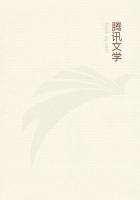In addition to holding elected office,Governor Rell has served on various local,state and national organizations.She is a member of the Board of Trustees of the Regional YMCA of Western Connecticut and the Candlewood Lions Club.She was previously active in the National Conference of Lieutenant Governors and served as President of the National Order of Women Legislators(NOWLS).
In 2003she was named a Melvin Jones Fellow,the highest form of recognition conferred by the Lions Club International Foundation.The fellowship represents humanitarian qualities such as generosity(慷慨,宽大),compassion and concern for the less fortunate.
The Governor has also been honored by the Uniformed Professional Fire Fighters,AmeriCares,Arthritis(关节炎)Foundation,CT Race for the Cure,Connecticut Library Association,Connecticut Chapter of the American College of Health Care Administrators,Connecticut Preservation Council,and Connecticut Federation of Business and Professional Women,among others.
Born in Norfolk(诺福克),Virginia,Governor Rell attended Old Dominion University and Western Connecticut State University.She received honorary doctor of laws degrees from the University of Hartford in 2001and the University of New Haven in 2004.
She and her husband,Lou,have made their home in Brookfield for many years.They have two grown children,Meredith and Michael.
State Bird州鸟
旅鸫在1943年成为本州州鸟。“Robin”代表许多常见的鸟,但在北美它是代表迁移的画眉鸟。康涅狄格州的旅鸫是北美洲的一种胸脯呈铁锈红且上部羽毛呈灰色和黑色的大的候鸟。它首次被早期殖民者叫为“Robin”是为了纪念心爱的英国鸟。尽管一些自然学家一再反对,但还是保留这传统的名字。
The American Robin was adopted as the official State Bird by the General Assembly in 1943.The name Robin is applied to a number of familiar birds,but in North America it is the migratory(迁移的,流浪的)thrush.(Turdus migratorius.)
Connecticut’s Robin,a true thrush,is a migratory bird with a reddish brown or tawny(茶色的)breast and a loud cheery(愉快的)song.It was first called Robin by the early colonists,in remembrance of the beloved English bird.Despite the protests of some naturalists,we still retain that traditional name.
Familiar in the summertime throughout North America,the American Robin is seen from Alaska to Virginia.Most people do not know that many Robins spend the entire winter in New England.They roost among the evergreens in the swamps(沼泽,湿地)where they feed on winter berries.
Description:Adults are gray brown above,with a darker head and tail.The bill is bright yellow;the chin and throat are white,with black vertical striping on the throat.Surrounding the dark eye are white orbital markings.The breast is brick red and the belly is white.In most eastern birds the tail has white corners.Females are somewhat more dull in color;the upperparts are lighter and more brown in color;the head is not so black and thus provides less contrast with the back;and the breast is paler,often edged with white.
The common race of robins found throughout most of the West tends to be more pale and lacks the white outer corners of the tail.Robins of the humid Northern Pacific coastal areas and those from Newfoundland tend to be very dark.
Juveniles are dark on top,much like the adult plumage,but the feathers of the back,upper wings,and rump(尾部,臀部)have streaks of white and blackish tips giving the upperparts a speckled(有斑点的,如斑点般散布的,混杂的)appearance.The cinnamon(肉桂色)coloring of the breast is overlaid with conspicuous(显著的)black spots.There is much individual variation in the cinnamon color of the underparts:some juveniles are largely white underneath.This plumage is molted(脱毛,换毛)sometime between August and October,depending on when the individual hatched.Both sexes look alike in juvenal plumage.
Here is the identification:
1.8.5inches Length
2.Black to dark gray head
3.Broken eye ring
4.Dull red breast and belly
5.White undertail coverts
6.Gray upperparts
7.Streaked throat
8.Thin yellow bill
9.Sexes similar—female somewhat paler
10.Winter plumage is somewhat paler than Summer plumage
11.Juveniles have spotted,whiter breasts
12.Common in residential areas where it often forages(草料)on lawns
13.Often sings very early in morning
14.Often found in large flocks outside of breeding season
State Flower州花
在1907年的会员大会上山桂被指定为康乃狄克州州花,山桂或许是美国本土最美丽的花儿。
它芬芳而又大片红白相间的花儿与森林和田野的黑色形成鲜明的对比。自从殖民早期,它们就不断吸引着旅行者的关注。在1624年第一次在约翰·史密斯的《历史概览》中被提及,在1750年被瑞士探险者彼特·卡姆作为标本送给了著名植物学家林奈。
Designated as the State Flower by the General Assembly in 1907,the Mountain Laurel is perhaps the most beautiful of native American shrubs.Its fragrance(芬芳,香味)and the massed richness of its white and pink blossoms so vividly contrast with the darker colors of the forests and the fields that they have continually attracted the attention of travelers since the earliest days of our colonization.First mentioned in John Smith’s “General History”,in 1624specimens(标本,样本)were sent to Linnaeus,the famous botanist,by the Swedish explorer Peter Kalm in 1750.
Linnaeus gave it the name of Kalmia latifolia,honoring the name his correspondent and at the same time describing the “wide-leafed”characteristic of the plant.In addition to being called the “Mountain Laurel”,the plant has also been spoken of as “Calico Bush”and “Spoonwood”.
Mountain Laurel is ideally suited as a landscape accent,informal hedge(树篱,障碍物)or border where its flowers can be enjoyed.It is best for natural landscapes and other low-maintenance gardens where it can be allowed to grow to its natural size.Grows 4-6″per year.
Leaf:Alternate,simple,evergreen,shiny/waxy above,light green below,2to 5inches long,elliptical(椭圆的)in shape,mid-vein raised on upper surfaces.
Flower:Very showy clusters,white to rose colored with purple markings,1inch across,with the petals forming a distinct firm bowl about the pistil([植]雌蕊)and stamens(雄蕊,雄性花蕊).Present March to July.
Fruit:A round,brown dehiscent(裂开性的)capsule[(植物)蒴果],1/4inch long,splitting into 5valves when dry;releasing very small seeds.Maturing in September and October.
Twig:Generally forked and twisted,green when young,later brownish-red.
Bark:Thin,dark brown to red in color,shredding(碎片).















